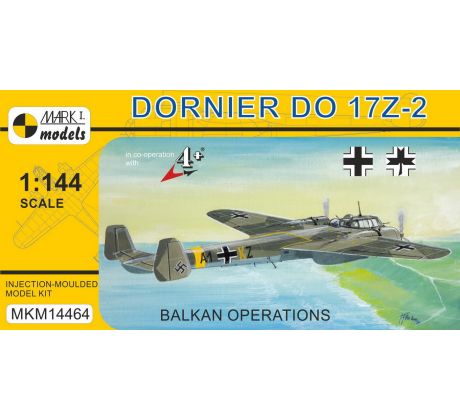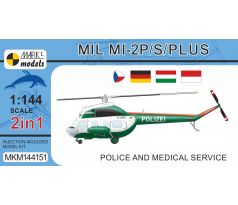Dornier Do-17Z-2 'Balkan Operations'

Dornier Do-17Z-2 'Balkan Operations'
Description: This injection-moulded kit contains 63 parts and eleven clear parts (the cockpit canopies, rear ventral gunner's window etc.). A comprehensive decal sheet is included.
Colour schemes included in the kit:
1) Dornier Do 17Z-2, U5+DT, Yellow D, III./KG 2 'Holzhammer', Luftwaffe, Thessaloniki-Sedes airfield, Greece, April 1941
2) Dornier Do 17Z-2, U5+EH, White E, 1./KG 2 'Holzhammer', Luftwaffe, Athens-Tatoi airfield, Greece, May 1941
3) Dornier Do 17Z-2, A1+KZ, Yellow K, 15.(kroat.)/KG 53, Luftwaffe, Zagreb (Agram) airfield, Croatia, July 1942
4) Dornier Do 17Z-2, 3. Zrakoplovno Jato, ZNDH '402', Croatian Air Force (Zrakoplovstvo Nezavisne Drzave Hrvatske), Zagreb-Borongaj airfield, spring 1945
| Ref. No.: | MKM144064 |
| Availability: | IN STOCK |
Dornier Do-17Z-2 'Balkan Operations'
The Do 17 was a German light bomber, designed in the early 1930s. It was originally intended as a fast six-passenger mail plane and its V1 prototype flew in November 1934. Following tests and design improvements in-line and radial engine powered aircraft were evolved, represented by the Do 17E/F and Do 17K/M/P, respectively. The most recognised and mass-produced variant was the Do 17Z series, with the Z-2 bombers and Z-3 long-range reconnaissance planes. Due to its fuselage outline it was dubbed the 'Flying Pencil'.
The Do 17 was a four-seat, all-metal monoplane powered by two Bramo Fafnir radial engines. It had a shoulder wing configuration and twin tail fins. Its long thin fuselage was fitted with a stepped cockpit and a glazed nose. Its bombload was 1,000 kg and it was fitted with six machine guns.
Do 17Zs were produced by four factories and in total some 880 aircraft were built.
The Do 17 was used throughout the war, and saw action in significant numbers in every major European campaign theatre as a front line aircraft until the end of 1941.
The last airworthy operated aircraft being used by the Finnish Air Force were eventually scrapped 1952.
Products purchased together with this product
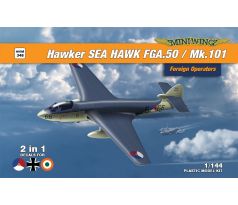
Hawker SEA HAWK FGA.50 / Mk.101 Foreign Operators
British Carrier Based Fighter / Attacker
Description:
30 plastic parts
2 kits in the box
decals for 3 versions of Netherland, West Germany and India

Cessna L-19A / U.S. ARMY
8th Army, Korea 1952
Description:
14 Clear plastic parts
Canopy mask
Decals for one Aircraft
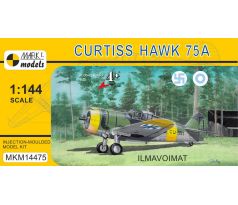
Curtiss Hawk 75A ‘Ilmavoimat’
This injection-moulded kit contains 30 parts and four clear parts (the cockpit canopy, rear windows and a landing light). A comprehensive decal sheet is included.
1) Curtiss H-75A-6, CUw-560 (ex-Norwegian No.439), Yellow/White 0, LeLv 32 (Fighter Sq.), Finnish Air Force (Ilmavoimat), Lappeenranta airfield, autumn 1941
2) Curtiss H-75A-2, CUw-556 (ex-French No.107), White 6, LeLv 32 (Fighter Sq.), Finnish Air Force (Ilmavoimat), Nurmoila airfield, June 1942
3) Curtiss H-75A-2, CU-581 (ex-French No.170), Blue 1, 3/HLeLv 32 (Fighter Sq.), Finnish Air Force (Ilmavoimat), Nurmoila airfield, early spring 1944
4) Curtiss H-75A-1, CU-577 (ex-French No.23), Yellow 7, LeLv 32 (Fighter Sq.), Finnish Air Force (Ilmavoimat), Nurmoila airfield, autumn 1943
Curtiss H-75A-1, CU-577 (ex-French No.23), HLeLv 11 (Fighter Sq.), LeR1 (Fighter Regt.), Finnish Air Force (Ilmavoimat), Pori airfield, 1945-47
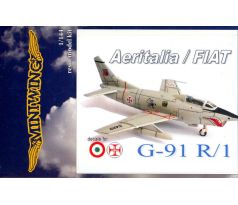
Aeritalia Fiat G-91 R1
Italian light ground attacker / reconnaissance aircraft
Description:
24 resin parts
clear vac canopy
decals for two versions


